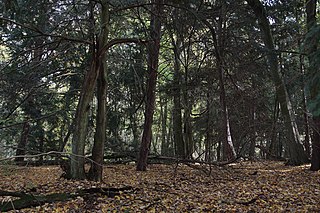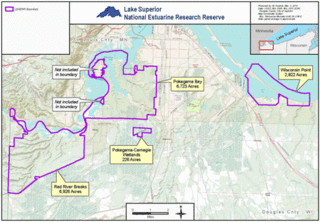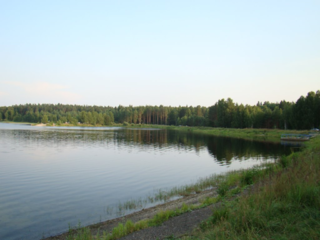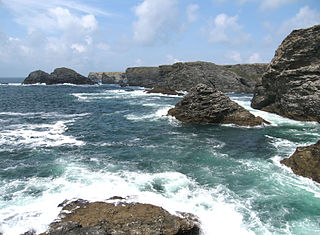Environment
60% of the land in the European Union part of the region is covered by forest, but most of this is commercial plantings. Less than 5-10% of the forest is old growth. The typical western taiga forest contains Norway spruce ( Picea abies ) and Scots pine (Pinus sylvestris) growing on shallow soil covered in moss, lichen and ericaceous shrubs.
Petersen et al. in their 1995 review of Nordic rivers distinguish two biogeographic regions in the Fennoscandian Shield. Their Southern mixed forest rivers group in southeast Finland has short, low-gradient streams in mixed coniferous forest, connecting many clear or humic lakes, ponds, peat bogs and wetlands, which overlap the boreo-nemoral zone. The whole Neva River basin could be assigned to this region. The other region is their Boreal rivers group with "high-gradient streams in the coniferous and deciduous forests of the boreal vegetation zone."

A biome is a distinct geographical region with specific climate, vegetation, and animal life. It consists of a biological community that has formed in response to its physical environment and regional climate. Biomes may span more than one continent. A biome encompasses multiple ecosystems within its boundaries. It can also comprise a variety of habitats.

Natura 2000 is a network of nature protection areas in the territory of the European Union. It is made up of Special Areas of Conservation and Special Protection Areas designated under the Habitats Directive and the Birds Directive, respectively. The network includes both terrestrial and Marine Protected Areas.

The Palearctic or Palaearctic is the largest of the eight biogeographic realms of the Earth. It stretches across all of Eurasia north of the foothills of the Himalayas, and North Africa.

The Tuchola Forest, also known as Tuchola Pinewoods or Tuchola Conifer Woods, is a large forest complex near the town of Tuchola in northern Poland. It lies between the Brda and Wda rivers, within the Gdańsk Pomerania region. The largest towns in the area are Czersk and Tuchola.
A Site of Community Importance (SCI) is defined in the European Commission Habitats Directive (92/43/EEC) as a site which, in the biogeographical region or regions to which it belongs, contributes significantly to the maintenance or restoration at a favourable conservation status of a natural habitat type or of a species and may also contribute significantly to the coherence of Natura 2000, and/or contributes significantly to the maintenance of biological diversity within the biogeographic region or regions concerned.
Altitudinal zonation in mountainous regions describes the natural layering of ecosystems that occurs at distinct elevations due to varying environmental conditions. Temperature, humidity, soil composition, and solar radiation are important factors in determining altitudinal zones, which consequently support different vegetation and animal species. Altitudinal zonation was first hypothesized by geographer Alexander von Humboldt who noticed that temperature drops with increasing elevation. Zonation also occurs in intertidal and marine environments, as well as on shorelines and in wetlands. Scientist C. Hart Merriam observed that changes in vegetation and animals in altitudinal zones map onto changes expected with increased latitude in his concept of life zones. Today, altitudinal zonation represents a core concept in mountain research.

Poland is part of four terrestrial ecoregions, one freshwater ecoregion, and one marine ecoregion.

The Lake Superior National Estuarine Research Reserve includes land and water areas along the St. Louis River and Lake Superior in Douglas County, in the northwest corner of Wisconsin, United States. It is one of 29 National Estuarine Research Reserves. The Reserve is operated as a program of the Natural Resources Institute of the University of Wisconsin-Madison Division of Extension. It has an area of 16,697 acres (6,757 ha), and was designated in 2010.
Institute for Environmental Solutions (IES) is a non-profit research organization in Latvia that utilizes airborne remote sensing technologies and creates multidisciplinary teams to design and develop innovative environmental solutions. IES is a network-based organization which brings together scientists, artists, engineers and specialists from Latvia and abroad.

Kalevalsky National Park covers one of the last old-growth boreal pine forest in Europe. It is situated on the border between Russia and Finland at about the midpoint from south to north. The park is located in the Republic of Karelia, 30 km north of the town of Kostomuksha. The Kalevala, an epic poem of Finnish and Karelian oral folklore, was drawn from this region. The traditional people of the area include the Sami people and the Karelians.

Mordovski Nature Reserve is a Russian 'zapovednik' in the north of the Republic of Mordovia, on the forested right bank of the Moksha River. It is in the transition zone of coniferous-deciduous forests and steppe. The reserve covers one-sixth of the Temnikovsky District of Mordovia. It was formally established in 1935, and covers a total area of 32,148 ha (124.12 sq mi). Its official name honors Pyotr Smidovich, a Soviet revolutionary and government official who was instrumental in establishing the Mordovsky Reserve.
Located in the Scandinavian Peninsula, Sweden is a mountainous country dominated by lakes and forests. Its habitats include mountain heath, montane forests, tundra, taiga, beech forests, rivers, lakes, bogs, brackish, marine coasts, and cultivated land. The climate of Sweden is mild for a country at this latitude, largely owing to the significant maritime influence.

The biogeographic regions of Europe are biogeographic regions defined by the European Environment Agency. They were initially limited to the European Union member states, but later extended to cover all of Europe west of the Urals, including all of Turkey. The map of biogeographic regions is deliberately simplified and ignores local anomalies. It is intended primarily as a framework for coordinating and reporting overall results of conservation efforts.

The Atlantic Biogeographic Region is the biogeographic region of Europe bordering the Atlantic Ocean and North Sea.

The Continental Biogeographic Region is a biogeographic region of Europe that extends in a broad band from east to west through the center of the continent.

The Black Sea Biogeographic Region is a biogeographic region of land bordering the west and south of the Black Sea, as defined by the European Environment Agency.

The Pannonian Biogeographic Region is a biogeographic region, as defined by the European Environment Agency. It covers the lowlands of the Pannonian Basin centered on Hungary.

The Steppic Biogeographic Region is a biogeographic region of Europe, as defined by the European Environment Agency.

The West Polesie Transboundary Biosphere Reserve is a transboundary nature reserve located in Poland, Ukraine, and Belarus. It is designated as an area of global importance under UNESCO's World Network of Biosphere Reserves under their Programme on Man and the Biosphere.
















